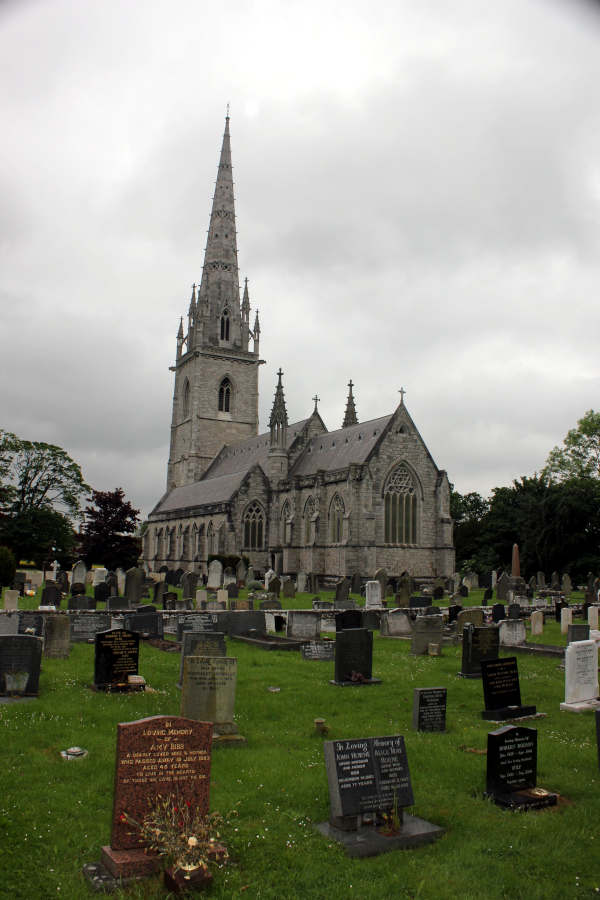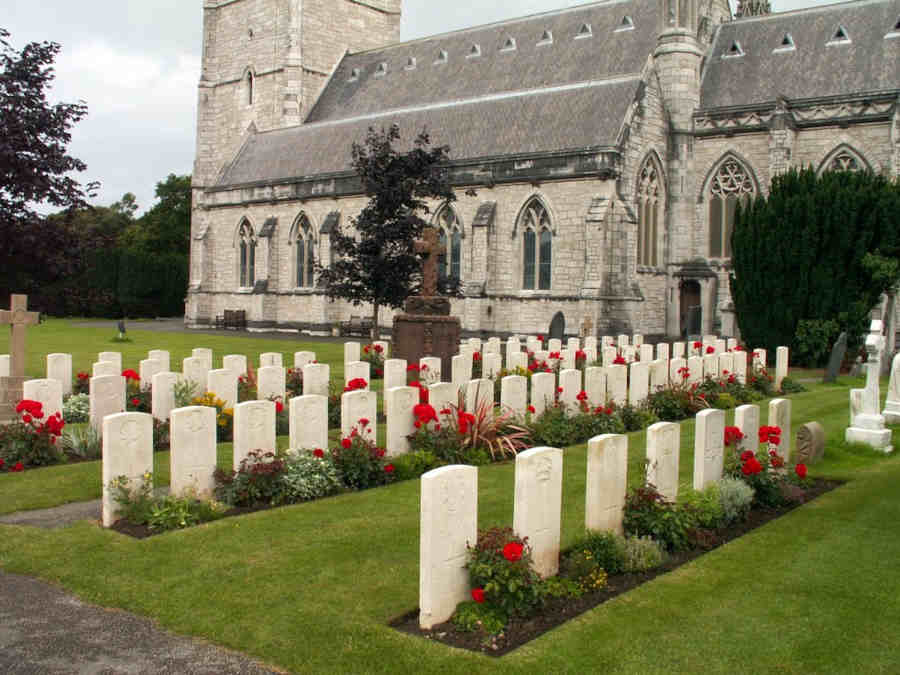The churchyard of St. Margaret's, known locally as the "Marble Church", ist he final resting place of more then 110 men and women who served in Commenwealth forces during the First World War. The earliest war grave date from the summer of 1916. More than 30 of those buried here were British soldiers, many from Welsh regiments, but the majority served with the Canadian army. Alongside them are a Canadian nurse and a member of Queen Mary's Army Auxiliary Corps, a femal unit which provided logistical and clerical support for the army.
Nearby Kinmel Park became an imortant military camp during the First World War. A system of practice trenches, some of which has been preserved, was intended to acclimatize thousands of men tot he complex battle-lines oft he Western Front. The camp was also a key site for medical care, with nearly 1,300 beds in huts and under canvas. In December 1918 No. 9 Canadian General Hospital relocated to Kinmel from Shorncliffe in Kent, and remained here until June 1919.
In the months after the Armistice of November 1918, as many as 15,000 Canadians were housed at Kinmel Park while awaiting their passage home. On average, Canadian soldiers spent around a month in Britain before repatriation. As in other camps, conditions over the winter were difficult, with overcrowding and shortages of coal and food. Although the longest-serving men and those with dependents were normally returned home first, logistical difficulties sometimes made this impossible.
Discontent among waiting soldiers led to several disturbances in Canadian camps across Britain. The worst was at Kinmel, where a riot involving more than 800 men took place on 4 and 5 March 1919, after a ship assigned to transport troops home was diverted elsewhere. Five Canadian soldiers died in the violence and were buried here, although one was later reburied in Canada.
Most of the Canadians laid to rest in Bodelwyddan were victims of the influenza pandemic which reached Kinmel in late 1918. Spanish flu is estimated to have killed some 50 million people around the world between 1918 and 1920, and around 250,000 in Britain alone. Among the Canadians buried here were several with British parents, or who were born in the United Kingdom. A memorial of red sandstone stands in the churchyard, erected by Canadian soldiers in honour of their comrades who died at Kinmel. |









